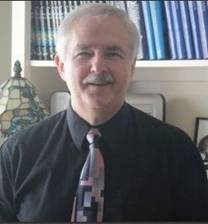Department of Chemistry, Physics, and Atmospheric Sciences – CHEMISTRY
College of Science, Engineering, and Technology
Chemistry is the study of how matter behaves at its most basic level. The central science, chemistry, is involved in everything that we do. Its applications stretch across all areas of life, including medicine, engineering and agriculture.
Jerzy Leszczynski
Professor and President’s Distinguished Fellow
Jackson State University
Department of Chemistry and Biochemistry
1400 J. R. Lynch Street
P.O. Box 17910
Jackson, MS 39217-0510
Physical location:
Just Science Hall
Office: Room 119
Contact:
E-mail: Jerzy@icnanotox.org
Tel: 601-979-3482
Fax: 601-979-7823
Teaching
Quantum Chemistry CHEM 756
Research Interests: Computational Chemistry
Areas of interest include: nature of chemical bonds, theoretical predictions of molecular potential energy surfaces and vibrational spectra, structures and properties of molecules with heavy elements, properties and structure of DNA fragments and nanomaterials. Also: applications of computational chemistry methods to environmental problems, surface chemistry and atmospheric chemistry.
Two research areas of Leszczynski’s group are the most vital: investigations of DNA fragments and development of novel techniques for investigation of properties and toxicity of nanomaterials.
His research on DNA fragments carried out for more than 20 years appreciably contributes to understanding of structure and properties of DNA bases, their interactions with metal ions and solvent, formation of hydrogen bonds and stacking interactions, proton transfer, tautomeric equilibria, and excited state properties. More recent studies include also larger DNA fragments, sugar and phosphate groups, dynamic properties, and investigations of DNA damage by low energy electrons. Perhaps, the most spectacular finding, that the amino groups in DNA base are nonplanar – the phenomenon that facilitates various type of interactions vital for DNA stabilization, was published in 1992 Such finding, derived based on his computational results went against the common beliefs of research community and it took 10 years to prove this phenomenon experimentally (Science, 2002, 256, 1222) and to convince the scientific society about the predictive power of accurate computational methods.
The second focal point of innovative research activities of Dr. Leszczynski’s group involves development and application of efficient methods to study nanomaterials. Discovery of different nanomaterials are beyond doubt revolutionary. It has been widely predicted and largely accepted that nanomaterials based technologies have potentials for being used in almost every area of science and technologies in near future. However, the rapid growth of nanotechnology empowers genuine concerns for the adverse effect of nanomaterials on human health and environments. Over exposure to nanomaterials may lead to different diseases including the asbestosis type in human. Environmental contaminations of nanomaterials may have long lasting effects. Since the experimental studies are expensive and limited there is a need for efficient computational approach to study such phenomena. Leszczynski’s group was the first to initiate evaluation of various properties of nanomaterials using QSAR techniques. Due to unique characteristics of nanoparticles this task requires development of novel QSAR approaches. Successful prediction of physico-chemical properties of many nanomaterials that initiated QSAR investigations in Leszczynski’s group has been currently expanded to study of toxicity of various nanomaterials. Such studies are also combined with detailed computational investigations of interactions of nanospecies with biological species, providing details of such interactions and bridging together two major areas of his group research interest.
Selected publications
J. Leszczynski, “Nano meets bio at the interface”, Nature Nanotechnology, 2010, 5.
J.E Sponer, A. Vazquez-Mayagoity, B.G. Sumpter, J. Leszczynski, J. Sponer, M. Otyepka, P.Banas P., M. Funtes-Cabrera, “Theoretical Studies on Intermolecular Interactions of Potentially Primordial Base-Pair analogues”, Chemistry European J., 2010, 16, 3057.
A. Furmanchuk, O. Isayev, O.V. Shishkin, L. Gorb, J. Leszczynski,
“Hydration of nucleic acid bases: A Car-Parrinello molecular dynamics approach”
Physical Chemistry Chemical Physics, 2010, 12 , 3363.
A.A. Toropov, A.P. Toropova, E. Benfenati, E., D. Leszczynska, J. Leszczynski,
“SMILES-based optimal descriptors: QSAR analysis of fullerene-based HIV-1 PR inhibitors by means of balance of correlations” Journal of Computational Chemistry, 2010, 31, 381
J. Gu, J. Wang, J. Leszczynski, “Comprehensive analysis of DNA strand breaks at the guanosine site induced by low-energy electron attachment. Chemphyschem, 2010, 11, 175.
J. Saloni, W. Kolodziejczyk, S. Roszak, D. Majumdar, G. Hill Jr., J. Leszczynski,
“Local and global electronic effects in single and double boron-doped carbon nanotubes” Journal of Physical Chemistry C, 2010 114, 1528.
K. Odbadrakh, J.P., Lewis, D.M. Nicholson, T. Petrova, A. Michalkova, J. Leszczynski,
“Interactions of cyclotrimethylene trinitramine (RDX) with metal-organic framework IRMOF-1” Journal of Physical Chemistry C, 2010, 114, 3732.
R.I. Zubatyuk, L. Gorb, O.V. Shishkin, M.O. Qasim, J. Leszczynski,
“Exploration of density functional methods for one-electron reduction potential of nitrobenzenes” Journal of Computational Chemistry, 2010, 31, 144.
A. Bamgbelu, J. Wang, J. Leszczynski, “TDDFT study of the optical properties of Cy5 and its derivatives” Journal of Physical Chemistry A, 2010, 114, 3551.
M. K. Shukla, M. Dubey, E. Zakar, R. Namburu, J. Leszczynski, “Interaction of Nucleic Acid Bases and Watson-Crick Base Pairs with Fullerene: Computational Study”, Chem. Phys. Lett. 2010, 493, 130.
RESOURCES


